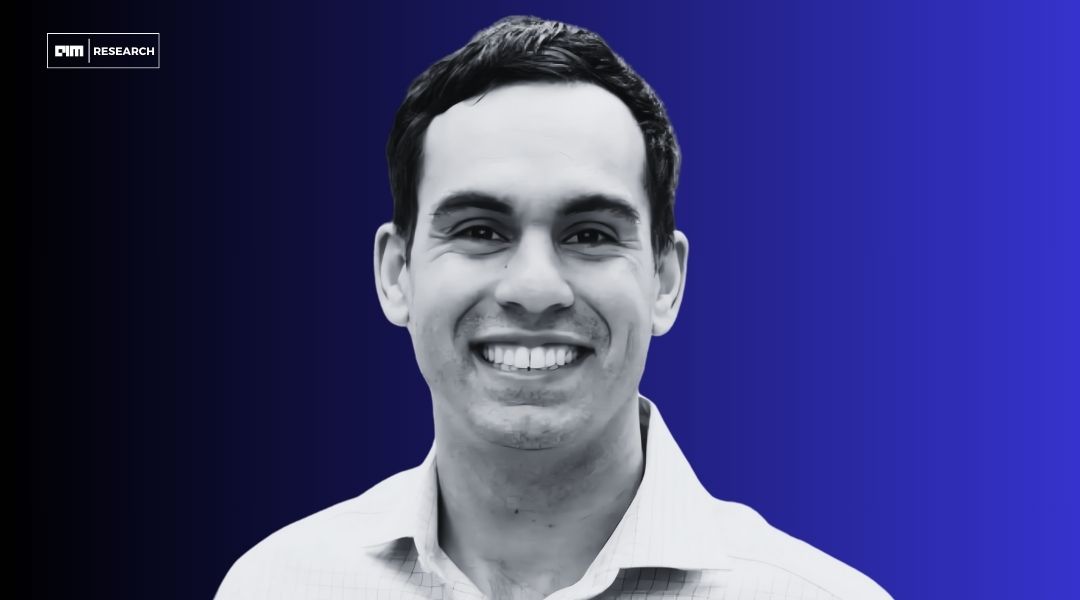

When companies invest millions in artificial intelligence, they expect results. Yet, many find themselves grappling with a fundamental problem: measuring AI’s true impact. Workhelix, a Palo Alto-based tech-enabled services company, is tackling this challenge head-on. Following its recent $15 million Series A funding round led by AIX Ventures with participation from AI Fund, Accenture Ventures, and prominent investors like LinkedIn co-founder Reid Hoffman and Google DeepMind’s Jeff Dean, Workhelix is trying to help enterprises make sense of AI adoption.
AIM Research spoke with James Milin, co-founder and CEO of Workhelix, to understand how the company is changing the way businesses integrate AI into their workforce strategies.
According to Milin, the biggest challenge in AI adoption isn’t that leaders are making poor decisions, it’s that they’re making them with incomplete information.
“AI doesn’t fit neatly into traditional IT strategies,” he explains. “It fundamentally changes how work gets done, who does it, and what ‘great’ looks like. But most organizations don’t have the measurement tools to track these shifts in a meaningful way.”
Workhelix doesn’t build AI; instead, it provides the framework for measuring its actual impact. Using rigorous data science and econometrics, the company pinpoints where AI drives productivity and where it simply adds complexity. “Our approach is built for leaders who don’t want to just ‘do AI’ they want to get it right,” Milin says.
Workhelix has attracted support from some of the most influential figures in artificial intelligence, including Andrew Ng, Mira Murati, and Jeff Dean. These leaders recognize a common problem. Companies aren’t struggling to access AI but instead they’re struggling to measure and maximize its impact.
“What they find compelling about Workhelix is that we bring clarity to a space filled with uncertainty,” says Milin. “We don’t assume AI is delivering value just because it’s being used. We measure it—causally, rigorously, and in a way that helps leaders make better decisions. For companies investing tens or hundreds of millions in AI, that clarity is the difference between hitting the mark and missing entirely.”
Convincing Fortune 500 executives to rethink AI adoption strategies without bruising egos is no easy task. But Workhelix has found an approach that resonates with senior leaders.
“We don’t tell leaders they’re wrong—we help them ask the right questions,” Milin explains. “Most executives already know AI has incredible potential. What they struggle with is knowing where to deploy it, how to track its impact, and whether it’s actually moving the needle.”
Rather than making bold claims, Workhelix starts by asking leaders straightforward, practical questions:
“Very quickly, leaders see the gap not because we point it out, but because they do. And once they see it, we’re there to help them close it,” says Milin.
Workhelix positions itself as a tech-enabled services company, focusing on workforce transformation as much as AI adoption.
“AI isn’t just about technology, it’s about how work gets done,” Milin explains. “That means the real challenge isn’t just deciding what AI to use, but how to integrate it in a way that makes people more productive.”
The company follows a structured approach: Decide, Deploy, Assess.
“Executives don’t need another AI vendor. They need a clear, reliable strategy for getting AI right. That’s what Workhelix provides,” says Milin.
Even the most AI-savvy enterprises fall into a common trap: assuming that AI adoption equals progress. Many Fortune 500s have dozens or even hundreds of AI pilots running, but few have a systematic way to measure what’s actually working.
“The most common mistake we see? Leaders assume AI is driving results simply because it’s being used,” Milin notes. “But unless you have a clear counterfactual, what would have happened without AI?—you don’t actually know.”
Workhelix leverages causal inference techniques to distinguish AI’s real impact from hype. “For executives, this isn’t an academic exercise. It’s the difference between making smart, high-impact AI investments or wasting millions chasing trends,” says Milin. “And in an environment where every dollar of ROI matters, that distinction is essential.”
Since launching its product in April 2024, Workhelix has attracted enterprise clients including Accenture, Wayfair, and Coursera. The demand for a rigorous AI measurement framework is clear, and the company’s recent funding round will enable it to scale even further.
Accenture, a strategic investor in Workhelix, plans to integrate the company’s solutions into its LearnVantage platform, helping businesses upskill and reskill their workforce in AI and data-related domains. With momentum building and high-profile backers reinforcing its approach, Workhelix will be the company that will help enterprises finally answer the question: Is our AI actually working?
📣 Want to advertise in AIM Research? Book here >
Cypher 2024
21-22 Nov 2024, Santa Clara Convention Center, CA
A Vendor Briefing is a research tool for our industry analysts, and an opportunity for a vendor to present its products, services and business strategies to analysts who cover the vendor specifically or a related technology or market.
AIM Research encourages technology vendors and agencies to brief our team for PeMa Quadrants, when introducing a new product, changing a business model, or forming a partnership, merger, or acquisition.


